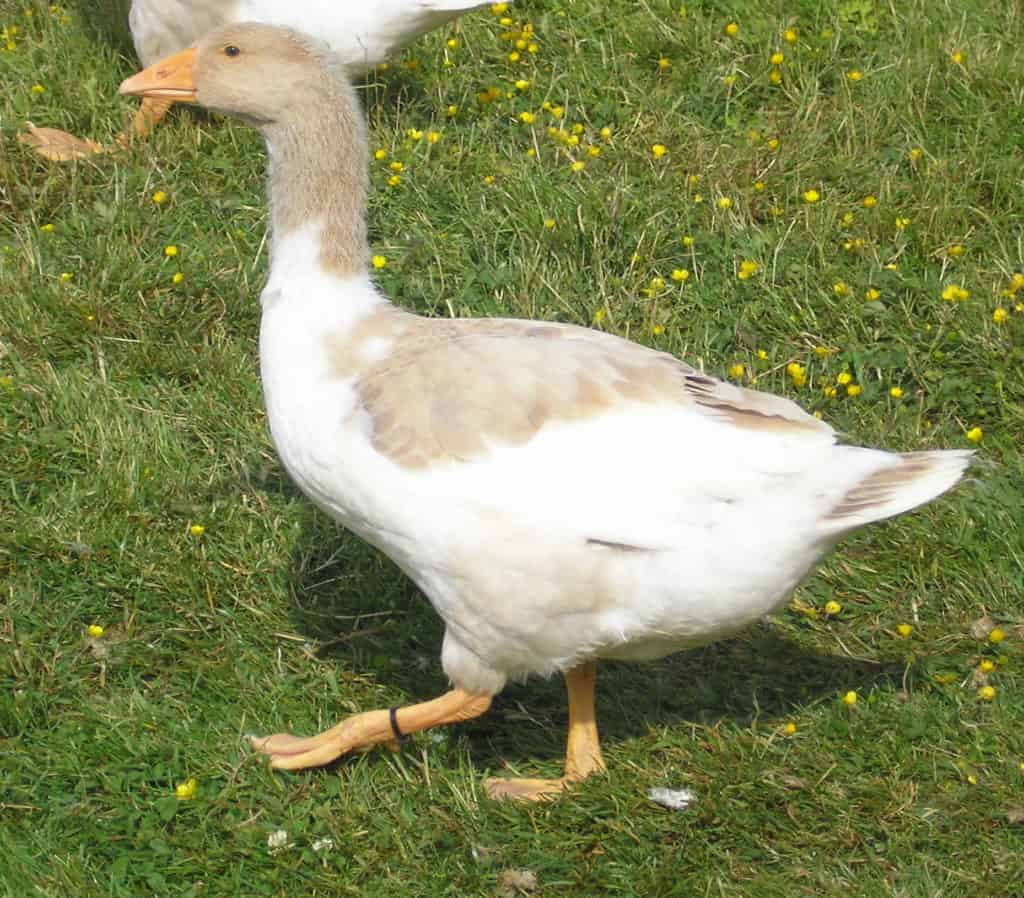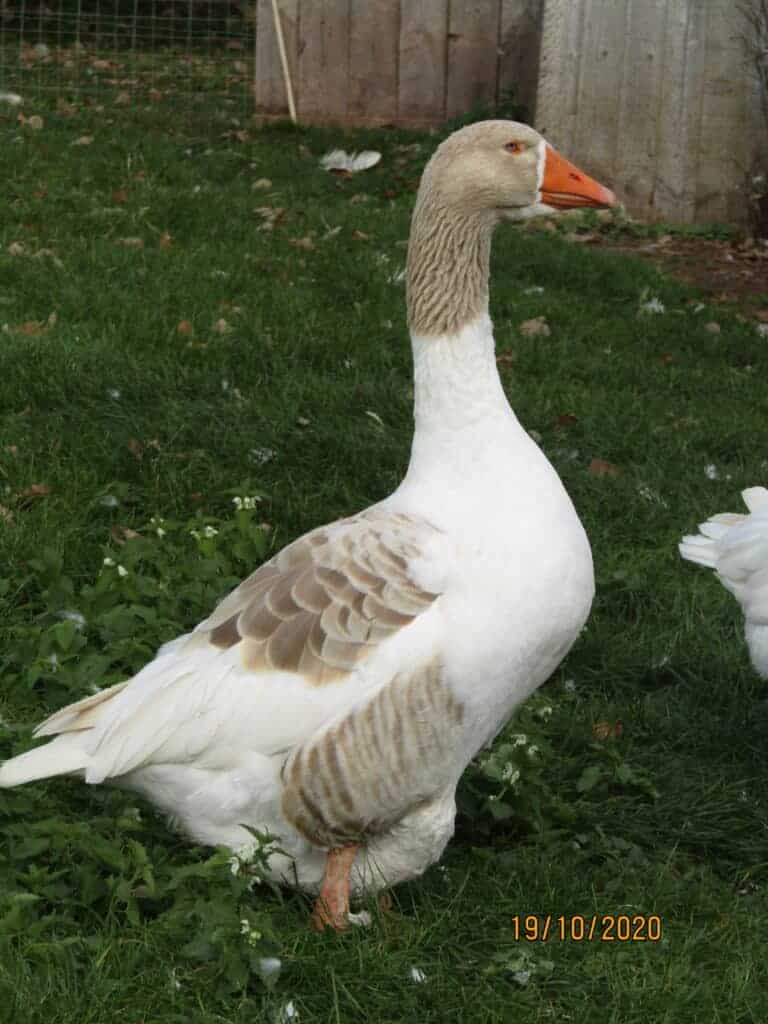Buff Back and Grey Back Goose

Of the standardised British indigenous breeds, the Buff Back and Grey Back are priority breeds on the Rare Breed Survival Trust’s watchlist.
Medium breed
Domesticated Greylag Goose Anser anser
Pied geese are typical European geese. The pied or ‘spot’ gene is popular in many countries surrounding the North Sea and Baltic. In Sweden, large grey back ‘spot’ geese are known as Skåne Gans; in the UK ‘spot’ geese are called the Grey Back and Buff Back. There are differences in size and shape between the regions, but the ‘spot’ colour pattern is the same.
Buff Backs are similar in weight to Brecons, at 8-10 kgs for ganders and 7-9 for geese. They can be produced by crossing a white goose with a buff gander, but several generations are required to perfect the markings.

The English Buff Back and Grey Back are dual lobed geese, usually orange in the bill, and the same shape as the English Embden and commercial Embden Geese. The dual lobe is the most obvious difference from the Pomeranian, which is single-lobed.
The two types were first standardised in the UK in 1982.
Most strains have good temperaments when hand-reared. Buff and Grey Backs lay well and are reasonably plump, so make a good all round goose. They will often go broody if kept as a pair or trio.